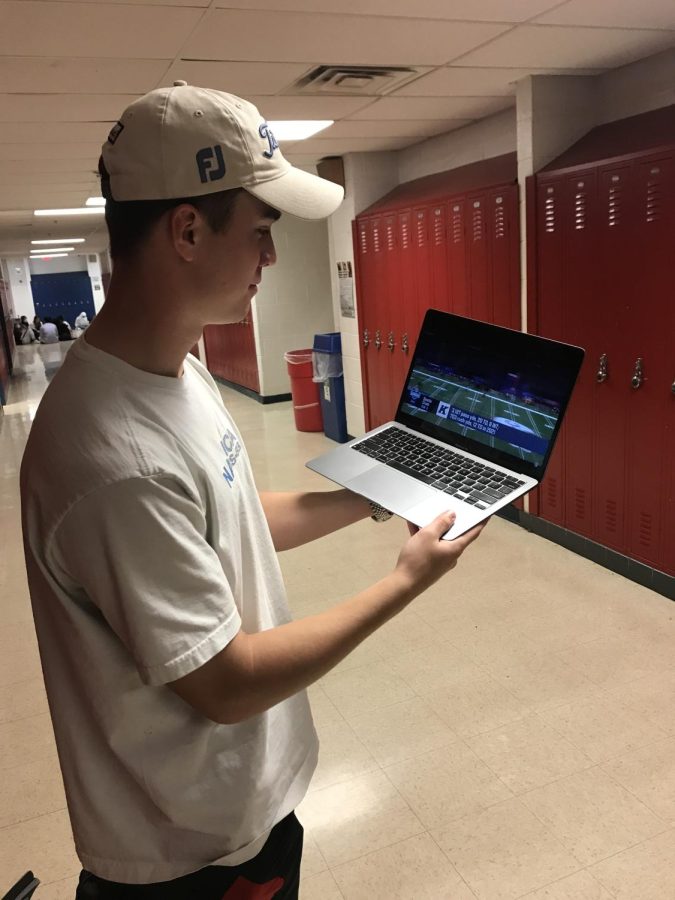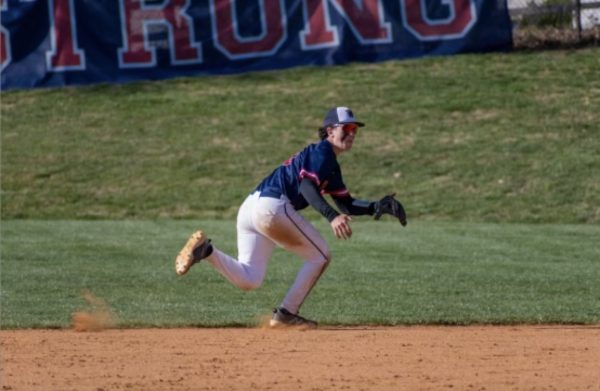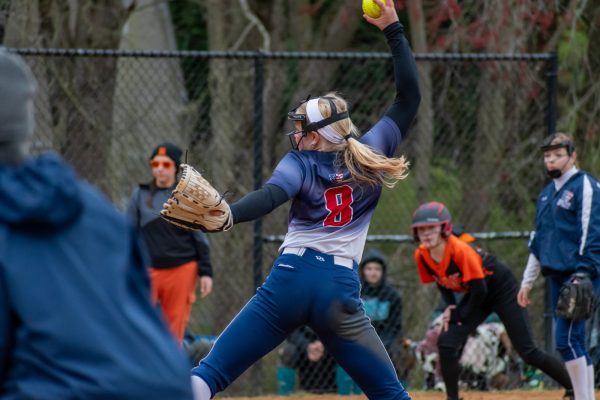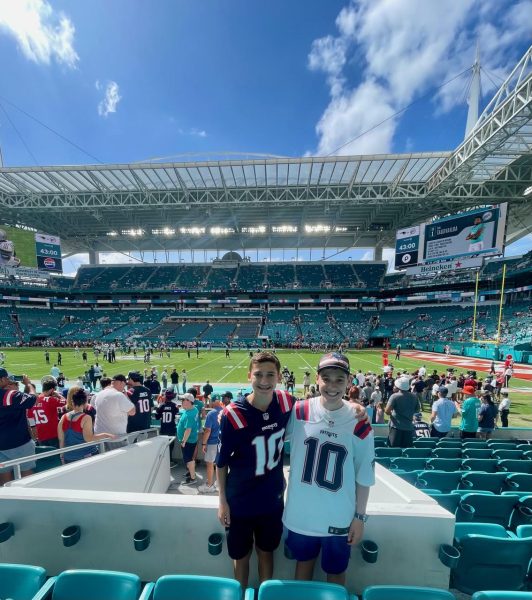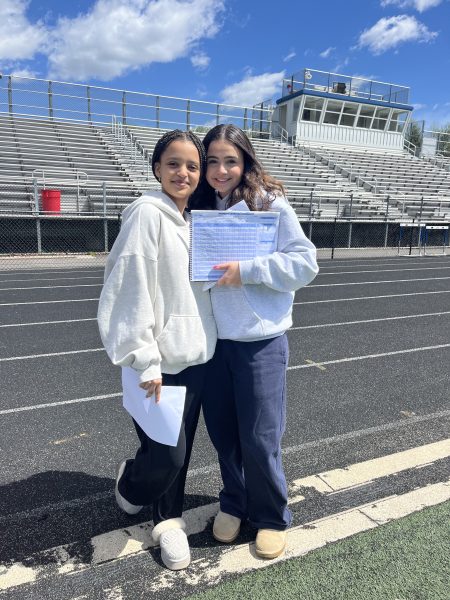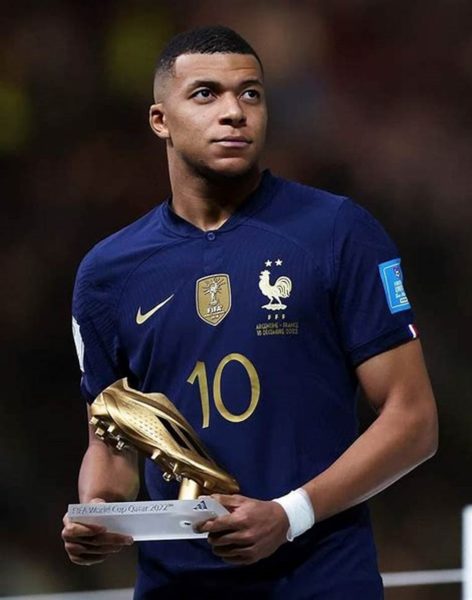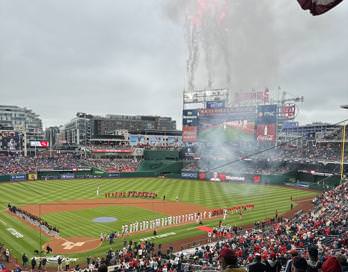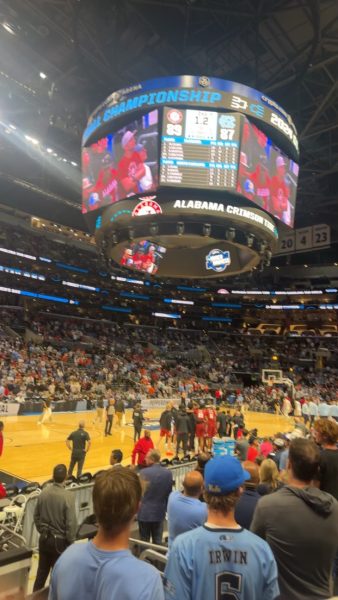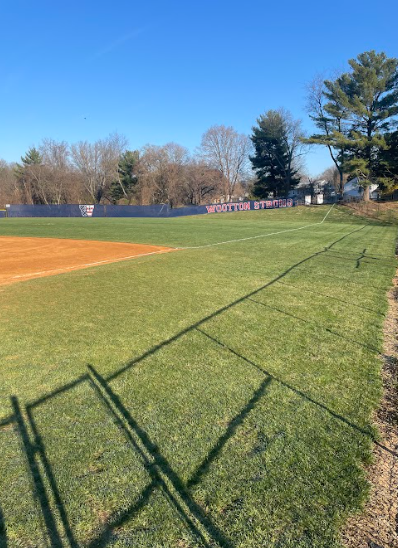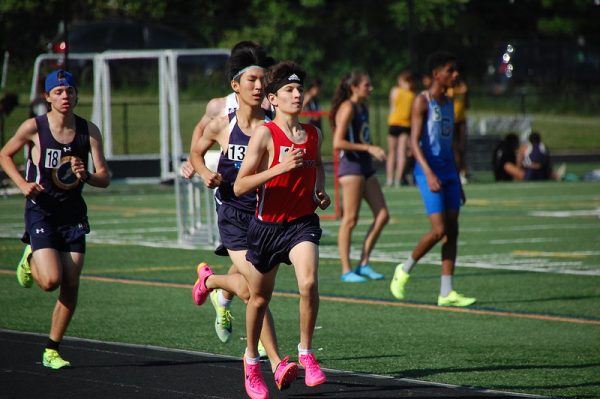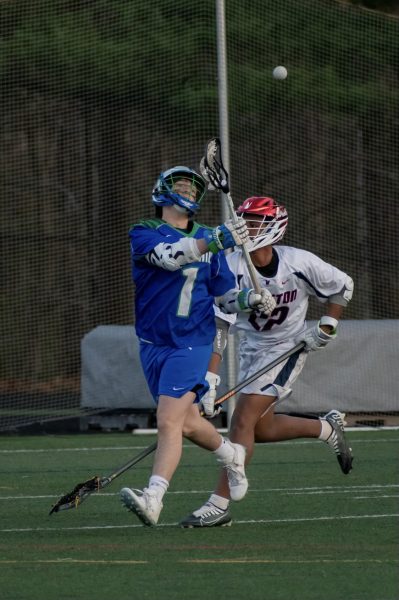NFL combine: measuring the future
Junior Tyler Cosgrove watches highlights from the NFL combine quarterback workout on Mar. 3.
The annual NFL combine took place from Mar. 1 to Mar. 7 at the Lucas Oil Stadium. The week-long event invites potential draft prospects to be measured and tested in their respective positions for teams to scout them. This year’s combine did not lack in exciting moments and had underdog prospects put themselves on the map.
Players who increased their draft stock or “winners” from the combine include quarterback Malik Willis from Liberty University, who did not have the best college stats, but has made experts start to believe he will be the first quarterback taken because of his arm strength. Another “winner” was University of Maryland tight end Chig Okonkwo who posted a 4.52 in the 40, which was the best time among tight ends in the entire combine. “I’m really rooting for Okonkwo obviously because of the UMD aspect, but I also think he’s a gritty player who can develop into something special,” junior Josh Mirsky said.
However, there were also “losers” of the combine who decreased their draft stock with poor measurements or testing results. One of the most popular “losers” was Kenny Pickett, former University of Pittsburgh quarterback, whose hand size was 8.5 inches, which would be the smallest in the league currently. “I don’t think all the measurements at the combine, especially hand size, are that meaningful or able to predict how well a prospect will do in the league because football is much different with pads on,” senior Jake Lottenberg said.
Many top prospects are choosing to opt-out of the combine because of injury concerns and instead are participating in a pro-day at their own school where they can achieve better results. Pro-days are normally for those players not invited to the combine, but it also provides a friendly environment to players to feel more comfortable. “It’s interesting to see who opts out of the combine because I see it as a platform to show off your best skills and shock the scouts,” Mirsky said.
The combine almost brought record breaking results to events like the 40-yard dash, which had two players record times in the top 10 fastest times ever. Kalon Barnes, University of Baylor defensive back, ran an unofficial 4.23 second 40-yard dash, putting him .2 seconds away from breaking the current fastest time held by John Ross. “It’s always fun to see who is the strongest or fastest player in the league and to see how players are getting substantially more athletic every year,” junior Tyler Cosgrove said.
The combine provides a way for top prospects to increase their draft stock and an outlet for doubted prospects to prove themselves worthy. That being said, the tests never show the full story behind a player and are not a main component used when drafting or signing players. “How a player moves and reacts on the field in real games, where there is pressure and similarly skilled opponents to play against, is a much better indicator of how a player will perform in the league,” Lottenberg said.
Your donation will support the student journalists of Thomas S. Wootton High School. Your contribution will allow us to purchase equipment and cover our annual website hosting costs.
Senior Chris Castelli is a Sports Editor in his second year on the Common Sense staff. In his free time, he enjoys playing sports and spending time with...


